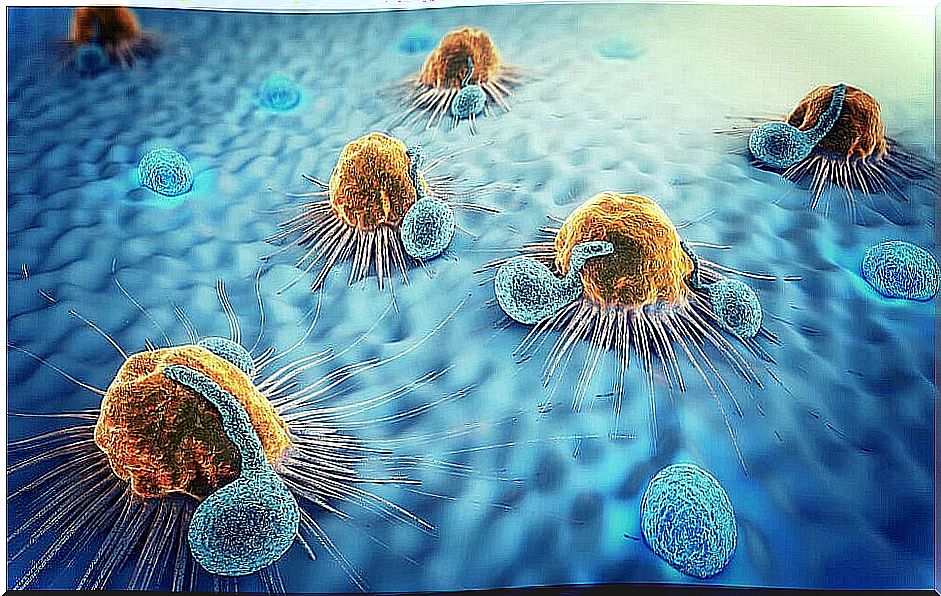Malignant And Benign Tumor, What Are The Differences?
Today, the possibility of having a malignant tumor is a concern that haunts almost all of us. Currently, cancer is one of the leading causes of death worldwide. It is normal to be afraid of suffering it.
However, we must be aware that not all tumors are cancer. A tumor is defined as a set of cells from any tissue in the body, which have multiplied in an uncontrolled way and have given rise to an abnormal mass.
Due to the importance of the problem, in this article we explain the main differences between a malignant tumor and a benign one.
Main differences between a malignant tumor and a benign one
Both a malignant tumor and a benign one are pathologies that must be studied extensively by a group of doctors. In the same way, treatments are usually established for both. This is done in order to avoid possible complications or further problems later.
What mainly differentiates a malignant tumor from a benign one is the extension. In both types, cells multiply uncontrollably. However, in benign tumors, they do not spread to other parts of the body.
As a general rule, the benign ones are not life-threatening. But this has a nuance, as when they grow too large and press on nearby organs, these can be affected. In those cases, they need to be removed.
In a malignant tumor, cells do have the ability to spread to other areas of the body. In fact, they also tend to grow in these areas: this phenomenon is called metastasis. Spread can occur both by contiguity, by blood or by the lymphatic system.
In this way, a malignant tumor usually spreads and causes other tumors in different parts of the body. Benign tumors do not usually spread because in them, the cells are surrounded by a membrane or capsule that contains them.

Another aspect that makes it possible to distinguish between a malignant and benign tumor is differentiation. Differentiation refers to how much tumor cells resemble those of the original healthy tissue:
- In a malignant tumor, the cells look little or little like the original ones. This allows you to establish grades for staging the cancer.
- However, in benign cells, the cells do resemble those of healthy tissue.
It is also important to know that a benign tumor usually grows more slowly than a malignant one. They can even interrupt their growth; in the wicked, however, this does not occur.
How can a tumor be diagnosed?
The earlier a tumor is diagnosed, the more likely it is to find an effective treatment. Therefore, it is necessary to raise awareness. Self-examining for lumps or abnormalities is one of the main measures, although we should not fall into obsession.
In addition, it is essential to go to the doctor. From a certain age, it is advisable to undergo general check-ups on a regular basis. These types of measures make up the screening methods and allow the early detection of tumors. For example:
- In women it is very important to perform mammograms to rule out the existence of a breast tumor.
- For men, it is recommended to examine the prostate by digital rectal examination.
In addition to early detection, there are other techniques that make it possible to diagnose a tumor when it is more advanced. Imaging tests, such as computed tomography, allow us to know the location and size of the tumor. Magnetic resonance imaging is also used.
However, the only way to study tumors in a concrete way is the biopsy, which allows to study a fragment of the tumor. Using microscopy, the behavior of your cells is observed. Thus, it is known what is its degree of differentiation and its rate of proliferation.

Treatment of a benign or malignant tumor
Treatment depends on the type of tumor, its location, its extension, and so on. Most benign ones can be removed by surgery. They usually do not need radiation therapy or chemotherapy.
On the other hand, the treatment of the malignant is usually more complex. Most combine surgery with cycles of radiation therapy or chemotherapy, even both. This is done in order to ensure the elimination of malignant cells in any part of the body.
Before any tumor, the most important thing is to carry out an early detection. This will allow a more effective treatment to be established. It is important since, although the benign ones do not put in direct danger the life, possible later complications are avoided.









